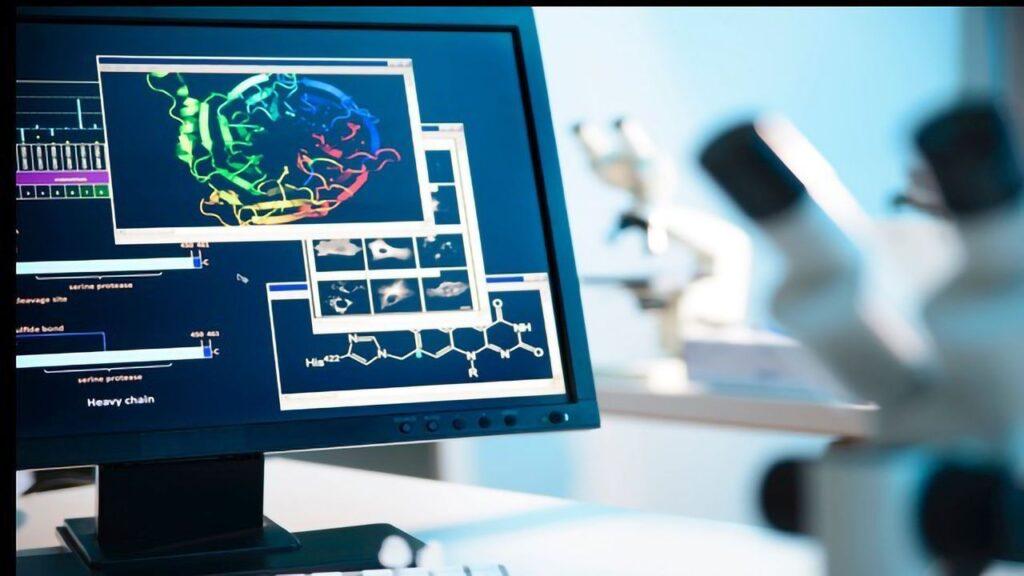Proteins are the molecular building blocks and machinery that drive every process in our body. These complex biomolecules carry out important tasks like structural support, cell signaling, immune response and metabolism. Despite their importance, studying proteins has traditionally lagged behind the analysis of genes (genomics) and RNA (transcriptomics). However, a new field called proteomics is helping scientists gain unprecedented insights into the world of proteins.
What is Proteomics?
Proteomics refers to the large-scale study of proteins. It involves identifying and quantifying the entire complement of proteins present in biological samples like tissues, biofluids or cell lines. The goal of proteomics is to understand how proteins interact with each other as well as how they relate to disease conditions, drug responses and various biological processes.
Proteomics provides a snapshot of the biological states of cells, tissues or whole organisms by examining differences and changes in protein expression levels, structures and interactions under specific conditions. This enables researchers to obtain a more dynamic and functional view of biology, compared to the static information provided by gene sequences.
Proteomic Techniques
Various advanced techniques and tools are employed in Proteomics research to identify, separate, quantify and study thousands of proteins simultaneously:
- Mass spectrometry is the core technology used to analyze protein samples. It can accurately determine the mass, abundance and sequence of proteins.
- Gel electrophoresis separates proteins based on size and charge, yielding protein fingerprints called proteome maps.
- Protein arrays display thousands of miniaturized proteins on a microscopic chip to study protein functions.
- Bioinformatics software is used for protein identification, biomarker discovery and network analysis.
Applications of Proteomics
Some major applications of proteomics include:
Disease biomarker discovery
One of the major goals of clinical proteomics is to detect disease-specific protein signatures or biomarkers in blood/tissue that can accurately diagnose diseases like cancer at early stages, predict treatment response or monitor disease progression. Modern proteomic tools are helping discover new biomarkers for diseases.
Drug target identification
Proteomics can profile differences in protein expression induced by disease states to detect potential drug targets. It also helps understand drug mechanisms, adverse effects, resistance and personalized therapies based on individual protein profiles.
Understanding biological pathways
Comparing proteomes of healthy and diseased cells provides clues about disrupted metabolic and signaling pathways involved in disease development. Proteomics is instrumental in constructing detailed protein interaction networks.
Diagnosing inherited disorders
Analysis of inherited mutations in proteomes aids diagnosis of genetic disorders affecting protein folding, structure or function. Proteomics fills gaps left by genetic analysis alone.
Agriculture and food science applications
Proteomics finds use in studying crop resilience, food toxicology, authenticating meat species and detecting allergens to improve food production and safety.
Animal models of human disease
Proteomic analysis helps validate animal models of human diseases by demonstrating conserved molecular pathways and protein signatures between species.
Challenges in Proteomics
While proteomics holds immense promise, a few challenges still remain:
- Limited depth of coverage: Due to analytical limitations, current methods cannot cover the entire proteome comprehensively. Only the most abundant proteins are typically detected.
- Dynamic range issue: Abundant housekeeping proteins often mask lower abundance disease proteins of interest. Improved separation methods are needed.
- Post-translational modifications: Variations introduced by modifications alter protein properties thereby adding complexity. Their analysis requires dedicated approaches.
- Large datasets: Proteomic experiments generate enormous amount of raw data requiring specialized bioinformatics tools for storage, analysis and mining of biologically relevant information.
- Reproducibility: Standardized protocols, reference datasets and quality controls need establishment for consistent reproducible results across different labs.
Overcoming these challenges through technological and methodological advancements will help realize the full potential of proteomics in accelerating biomedical discoveries, precision medicine and other applications. Despite being a young field, proteomics is already transforming our understanding of protein biology and its role in health and disease. In the coming years, it is poised to make even bigger impacts through large-scale projects like the Human Proteome Project.
Get more insights on this topic:
https://www.newsstatix.com/proteomics-unlocking-the-secrets-of-life-through-protein-studies/
